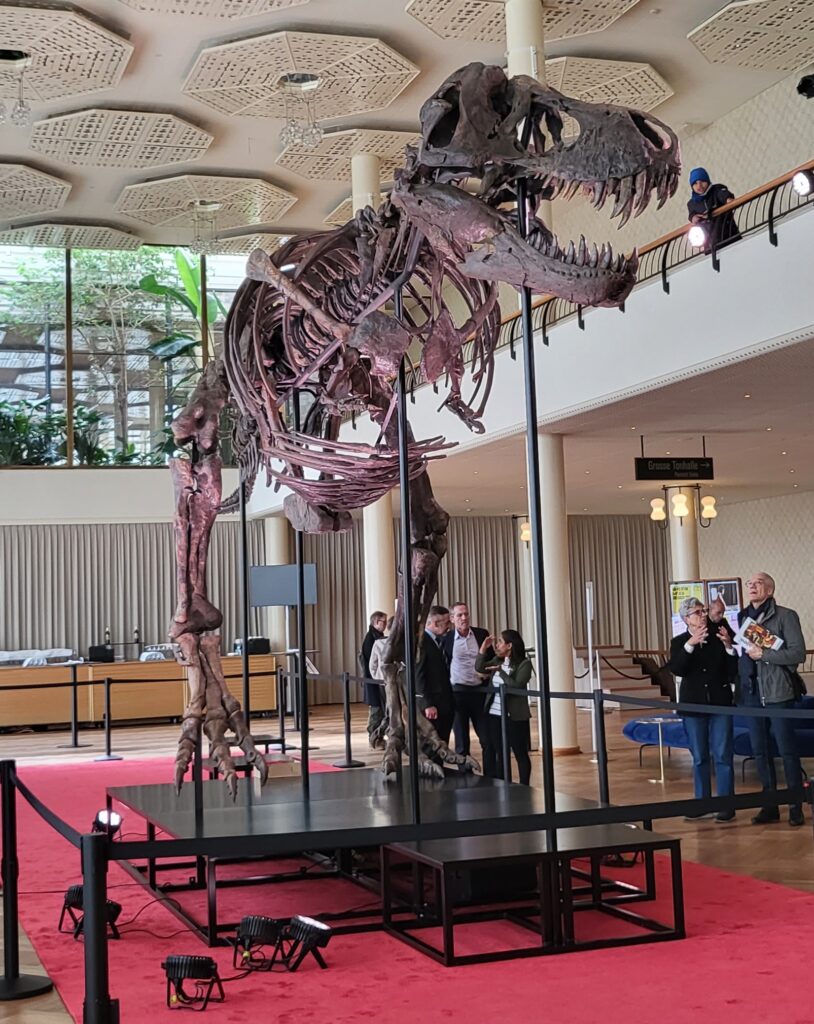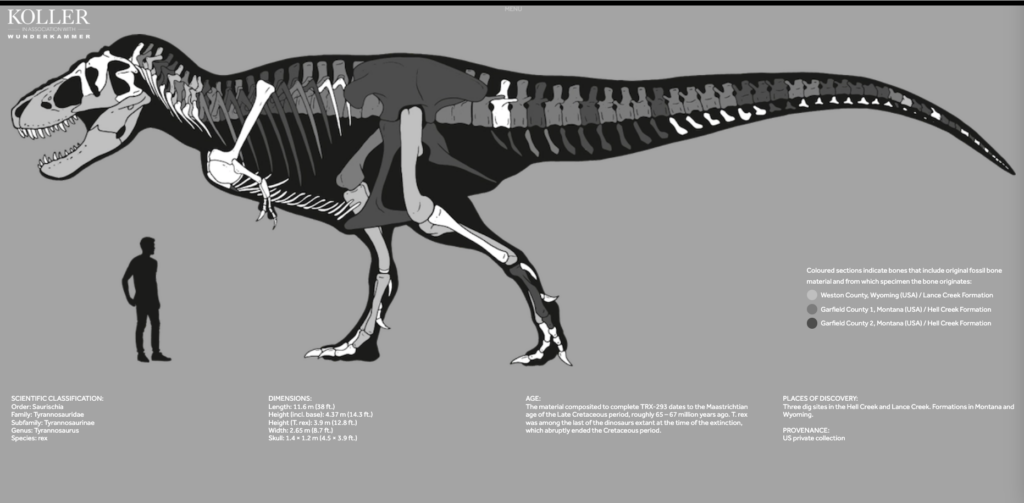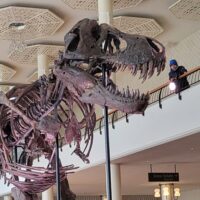There is another T. rex for sale and I went to see it
Yesterday I took a quick trip to Zurich to see the unveiling of Trinity the T. rex. Trinity is being offered for sale at Koller Auction House (see their dedicated Trinity page), and is on display for public view at Zurich Tonhalle, with booking.

Trinity represents an interesting test for the currently complicated T. rex market. As its name suggests, Trinity is not just one individual specimen, rather it is made up of parts of three individual T. rex, as well as some cast parts from another rex. There isn’t anything secret about the conglomerate nature of Trinity, and at the press conference yesterday this was a point of open discussion among the assembled fossil folks and the auctioneers. This is what Trinity is, we will see if that is what the market wants.
Thinking why or why not Trinity being not one but three animals matters, I believe it comes down to what someone wants a T. rex for. During the press conference I asked just that question: “Why are T. rex desirable? Why will someone buy Trinity?” Kirby Siber was kind enough to answer, saying T. rex
“are the stars”, and he compared them to a Picasso or a Rembrandt in their ability to “draw the masses”. He said that “for any museum it can increase the number of visitors”.[1] Perhaps, then, one of the most attractive market aspects of a T. rex is its ability to attract people. If Trinity can do that, perhaps the market will see it as a worthy T. rex to buy.
I think that Trinity is likely to sell (and so does everyone I spoke to). The people speaking at the press conference seemed to think it was very likely that Trinity would either be purchased by a museum directly or, as action house rep Christian D. Link said, “private people like to buy [a T. rex] and give it as a loan to a museum”. In my opinion, Trinity may be attractive to a museum-going audience who, first, may not really notice that Trinity is made of three, and second, may not care. The T. rex‘s lure may be more than the sum of its parts.
The wildcard, though, is the concept of authenticity. Trinity is being sold as having “50.17% original bone material” (50% was called “the magic number” at the press conference)[2], and a buyer can’t really hope for much more than that I don’t think. Trinity also looks pretty good in my opinion: I experienced Trinity as an individual despite knowing very well it wasn’t. But markets for high value unique goods are famously unpredictable and we don’t know yet how the market defines T. rex authenticity. Understand that I am in no way saying that Trinity is inauthentic. In my definition of the word, Trinity is authentic…but I’m not going to buy Trinity. No one really knows what is important to the T. rex consumer. Also, there are so few T. rex consumers out there that it could be silly to even try to project one uniform definition of “authenticity” on to them.

So really, we just have to see what happens here. If Trinity fetches a higher than expected price [3] it might give us a clue as to what the market considers to be acceptable authenticity for a T. rex. We also might see more composites come to market. If Trinity doesn’t fetch a high price, that might feed into a wider market re-think. If the market will only accept T. rex composed of individual animals that meet market requirements for completeness, there simply may not be enough acceptable T. rex left on earth to satisfy demand.
You know what? I had a great time in Zurich yesterday. Everyone I spoke to was nice, interested in my project, and ready to help out. I was also so very glad to hear their experiences with fossils. Also I got a free glass of wine and a sandwich! It has been a pretty terrible month for me in some respects, but my visit to Trinity yesterday was a good reminder of why I love this research.
T. rex sales are controversial, particularly within the palaeontological community, and I am working on contextualising that controversy. As I go forward, I keep finding there are interesting people on all “sides”, who love what they do and are open to sharing their experience and experiences. Indeed, the “sides” aren’t as divided as I thought they might be. I’m not supporting or judging any position, I’m trying to understand. The challenge of fossil sales is just so interesting, and I am enjoying talking to everyone about it.
Notes:
[1] Astute readers would note that I don’t usually name or directly quote people who I have spoken to for my research. This is a bit different. I asked my question at a public press conference and got a public response. I wouldn’t quote a project participant.
[2] I don’t know if this is by bulk or count.
[3] Link stated at the press conference that 5mil would be a good amount, not sure if he meant Swiss francs or what; I took that to be a low ball.
